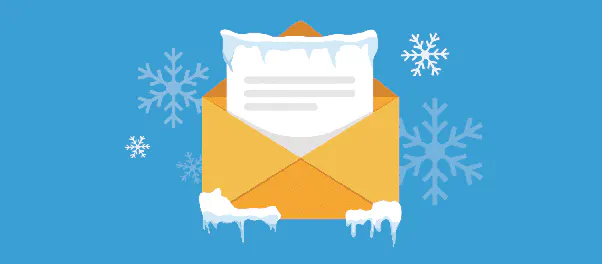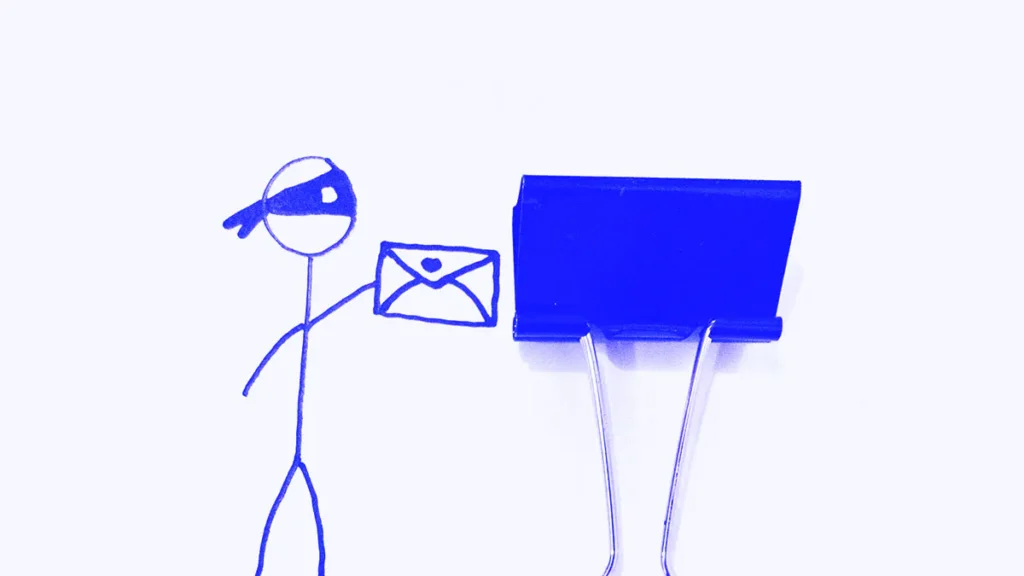Which one is better: Cold Email and Warm Email in Marketing?
One key topic of conversation in email marketing is the distinction between cold and warm emails. Let’s simply define the two for the benefit of any newcomers. Emailing a prospective client without establishing rapport or prior contact is known as “cold emailing.”
Businesses embrace cold email campaigns for their lead generation ability despite the danger of spam reports damaging the sender reputation.
On the other hand, “warm emailing” is all about keeping in touch with old customers. Social media contacts or other types of inbound marketing platforms are essential to the success of this strategy. Since the sender’s reputation is already established, the recipient is more likely to take action after reading a warm email.
The basic goal of any business sending out emails, whether cold or warm, is to develop relationships that may lead to commercial opportunities.
Cold and warm email campaigns are important gears in modern digital marketing. When executed properly, they power email marketing campaigns and help convert leads into paying customers with little friction.
Understanding the nuances between a cold email and a warm email is crucial to today’s business sales process. These two tactics are crucial to closing a deal because of their strengths. We’ll cover everything from how to write a catchy subject line to how to limit your sending volume as we dig into this vital topic.
Understanding Cold Emails
In the “cold email vs. warm email” discussion, knowing what a “cold email” is is crucial. Simply put, “cold emailing” are unsolicited communications sent to prospective clients with whom the sender has no previous contact.
These emails are an important part of cold emailing methods since they are frequently the first communication between two parties in a possible commercial relationship.
Usually, when you send cold emails, your primary purpose is to present a new product or service and get potential customers interested in it. A cold email’s main goal is to create leads and encourage participation, even though it has the reputation of being uninvited.
Successful cold email campaigns need sales reps to have a firm grasp of the function of cold emails within the larger context of marketing strategy.
The Art of Crafting a Cold Email

Sending out cold emails that connect with the target audience takes some finesse. Each cold email outreach must pique the reader’s interest enough to prompt them to act without sounding spammy.
Often, the strength of individualization and applicability is the deciding factor in achieving this balance. A compelling call to action in a cold email may be achieved by addressing the prospect’s pain concerns.
A strong basis for generating fruitful business negotiations may be established by injecting relevance and personality into your initial email marketing.
Understanding Warm Emails
Understanding what constitutes a “warm email” is essential for delving further into the “cold email vs. warm email” debate. A warm email is more effective in email marketing than its cold email equivalent. In contrast to warm emailing, which builds on existing relationships with recipients, cold emailing involves contacting new clients without any prior relationship.
An effective way to nurture existing connections and capitalize on prior contacts to move prospective clients farther down the sales funnel is with a warm email strategy.
These warm email messages avoid the awkwardness of a “cold” introduction by capitalizing on previous contacts with the sender to create leads and gently guide the customer journey toward a closed business deal.
The warm email technique becomes even more powerful when consumers have interacted with your brand in the past, whether via a social media page, blog post, or previous marketing emails.
The Art of Crafting Warm Emails
The beauty of a warm email is in the details, and the details come from previous interactions and understanding their pain points. Here, personalization is key; your warm email’s response rate will improve proportionally as its relevance and specificity increase.
Warm email messages are more likely to succeed if personalized based on information gleaned from past experiences with potential customers (i.e., what they previously engaged with).
Remember that every successful warm email you send brings you closer to converting potential customers into paying clients.
Open and Reply Rates
Email marketing relies heavily on open and reply rates. Your capacity to generate leads is directly impacted by the information they provide on the efficiency of your cold email and warm email methods.
Cold Email Open and Reply Rates
Average cold email open and reply rates are all over the place. These stats are profoundly affected by variables such as email send time and subject line.

Sending “cold” emails has one goal: getting customers who are not acquainted with your product or service to contact you.
Even though cold emails aren’t requested, they may be useful for your cold emailing outreach if you know how to write them.
Warm Email Open and Reply Rates
A warm email campaign has open and reply rates that tend to be higher. Why is that? These aren’t some random people you found online and decided to send an email to.
Instead, they are those who have expressed interest or are already regular consumers. Therefore, variables such as customization and usefulness become essential.
Success rates for warm emails increase when they are personalized for the receiver based on their interests or problems.
Consequently, improving your marketing plan requires an awareness of the major distinctions between a cold and warm email regarding open and reply rates.
Pros & Cons of Cold Emails
To successfully navigate the email marketing environment, notably the “cold email vs. warm email” issue, a thorough grasp of the benefits and drawbacks of both strategies is essential. Cold emails are a common first step in the customer journey process, so let’s start there.
Advantages of Cold Emails
The enormous potential audience is one of the most persuasive benefits of cold emailing. It opens the door to interacting with new potential customers outside of your current clientele.
Cold emailing shows to be a useful technique whether your goal is to create leads, launch a new product or service, or make first contact with prospective clients.
In addition to these advantages, a cold email campaign may be easily scaled and adapted to different situations. You may test out several versions of your email’s content, headline, and call to action to see which ones generate the best response from your audience.
Your efforts to reach out to people through a cold email outreach may be continuously enhanced and perfected, thanks to this flexibility.
Disadvantages of Cold Emails
However, there are obstacles to overcome in every cold email campaign. Because the receivers have no preexisting relationship with your company, the open rates for these emails tend to be lower than those of “warm” campaigns. Therefore, customizing these emails for each individual might be difficult.
Furthermore, cold emails run the danger of being labeled as spam, which may be detrimental to your sender’s reputation. Maintaining deliverability to a customer’s inbox might be nerve-wracking if they have little interest in your business.
By weighing the benefits and drawbacks of sending a cold email, you may improve your email marketing strategy.
Pros & Cons of Warm Emails
As we delve further into the ongoing “cold email vs. warm email” discourse within the realm of an email campaign, it is of utmost significance to gain a comprehensive understanding of warm emails.
Advantages of Warm Emails
A warm email may help you in many ways. First, it has better open and click-through rates. The history shared between you and the receiver is mostly responsible for this.
You aren’t sending this message to complete strangers; these individuals have already shown interest in your company. That’s because familiarity promotes ease and compels participation.
Second, there are chances for long-term consumer value and continued engagement with a warm email. These individuals have actively shown an interest in your offering by opting in.
So, it’s helpful to your email marketing efforts to provide them with some personalization through a warm email.
Disadvantages of Warm Emails
However, there are certain difficulties associated with warm emailing. Scalability is a key issue. Developing and maintaining meaningful connections takes time and energy.
Sending many “warm” emails is not possible in the same way that sending “cold” emails is. Each “warm” email should be tailored to the recipient and their specific situation.
Finding new customers and turning them into warm leads might take a lot of effort and time.
Although a well-balanced email marketing campaign has several components, one of the most important is the magnetic warm email.
Cold Email Success Factors
The email marketing game can be changed by mastering the art of cold emailing. While the “cold email vs. warm email” controversy rages on, it’s not hard to see how effective cold email campaigns may be.
So, what are the secrets to a successful cold email? Let’s find out.
Crucial Elements of an Effective Cold Email
To write an effective cold email, you need to do more than simply reach out; you need to carefully establish a relationship. The first hook in an email is the subject line. It’s what makes potential customers want to learn more by clicking through.
The cold email body should pique their attention and convince them to do business with you.
Additionally, a weak call-to-action (CTA) might result in lost business, while a powerful one can bring in new clients. If you want them to do anything, like place an order or sign up for a demo, here is the place to do it: the call to action.
Adding a personal touch to your cold emailing is also essential. If you take the time to learn about your intended audience, you can personalize your email messages and increase their impact. Mass-sent, generic marketing emails are annoying and ineffective.
Tips and Best Practices for Cold Emailing
Finally, here are a number of guidelines to keep in mind while you draft your cold email: Change up your cold email subject lines, design, and calls to action often. Keep track of your results and improve on them.

Verify the reputation of your email service as well. A poor sender’s reputation may hinder your ability to reach your target audience through cold emailing.
Warm Emailing Success Factors
The need for efficient warm emailing is becoming more evident as we continue to wade through the cold email vs. warm email seas. A warm email is crucial for keeping in touch with current clients and developing new business.
So, what characteristics make for effective warm emailing?
Crucial Elements of Effective Warm Emailing
The secret sauce for warm emailing is making it personal and relevant. If you know what the person you’re emailing wants, likes, or needs, you can shape your emails to focus on those things. This gives your emails an extra punch and makes them feel more like a friendly chat than a salesy talk.
Keeping that personal touch going is the key to making warm emails work. Every email should connect to the one before it, keeping the story going and showing the person you’re emailing that you really get what they need and that you’re there to lend a hand.
Another important piece of the puzzle is getting the timing and number of emails just right. Too few emails and the person might forget about you; too many, and they might feel swamped and send your emails straight to the junk folder. It’s all about finding the sweet spot, and always making sure each email adds something to the person’s experience.
Tips and Best Practices
And now, some advice on how to make the most of warm emails. Keep your email account secure and your email server reputation high. The percentage of successfully sent emails to your target audience will increase.
Make use of HTML elements to improve your email’s attractiveness, but don’t forget to mix in some plain text as well. Keep your emails engaging, personable, and helpful; this is the secret to warm emailing.
Choosing the Right Approach
Finding your way around the world of email marketing requires a detailed guide. One of marketers’ toughest choices in the “cold vs. warm email” question is figuring out which style is right for their business. Getting the hang of when to use each method can be like having a handy compass.
Cold vs Warm Emailing: When to Use Each
Reaching out to new prospective consumers through cold email is most effective. They are the first step in developing a professional connection and may be pivotal for companies looking to expand their operations. You may also use a cold email to deliver a value statement that summarizes the advantages of your product or service in a single paragraph.
On the other hand, warm emails are great for keeping in touch with old friends. Customers who have voluntarily subscribed to your mailing list have shown an interest in hearing from you. As a result, friendly emailing paves the way for more customized communication, strengthening existing bonds and attracting new, committed clients.
To know whether to send a cold email or a warm email, you must know where your potential customer is in the buying process. For example, whereas a warm email may be more successful during the deliberation and decision phases, a cold email may be more effective during the awareness and interest phases.
A Hybrid Approach: Combining Cold and Warm Email Tactics
While the argument continues, some marketers have succeeded with a combined strategy. This necessitates alternating between the two strategies at various points in the interaction with the client. Cold emailing is used to attract new customers, whereas warm emailing is used to convert them into paying customers.
The same core concepts from both approaches are used in this strategy to produce a thorough and efficient email marketing campaign. Warm emailing is used to cultivate and strengthen an existing relationship, whereas cold emailing is intended to build credibility and develop an initial connection.
Which strategy you should use depends heavily on your organization’s specifics and intended audience. The key to a successful email marketing campaign is focusing on the recipient’s needs first, regardless of the approach you use.
Conclusion
Both cold and warm emailing can shape fruitful business relationships. Companies can use Nureply’s artificial intelligence (AI)-powered cold emailing software to quickly and easily compose high-quality, tailored cold emails to improve outreach efforts. However, you shouldn’t ignore warm emailing.
The strength of these relationships is what gives them their power. Nureply’s combination of AI and human-like personalization allows organizations to take advantage of the benefits of both cold emailing and its warm equivalent.
As a result, whether you’re using cold emailing to break the ice or warm emailing to keep the conversation going, the ultimate aim should always be the same: providing value to your readers. The best approach can bend and change as needed to meet your organization’s and its customers’ specific demands.


